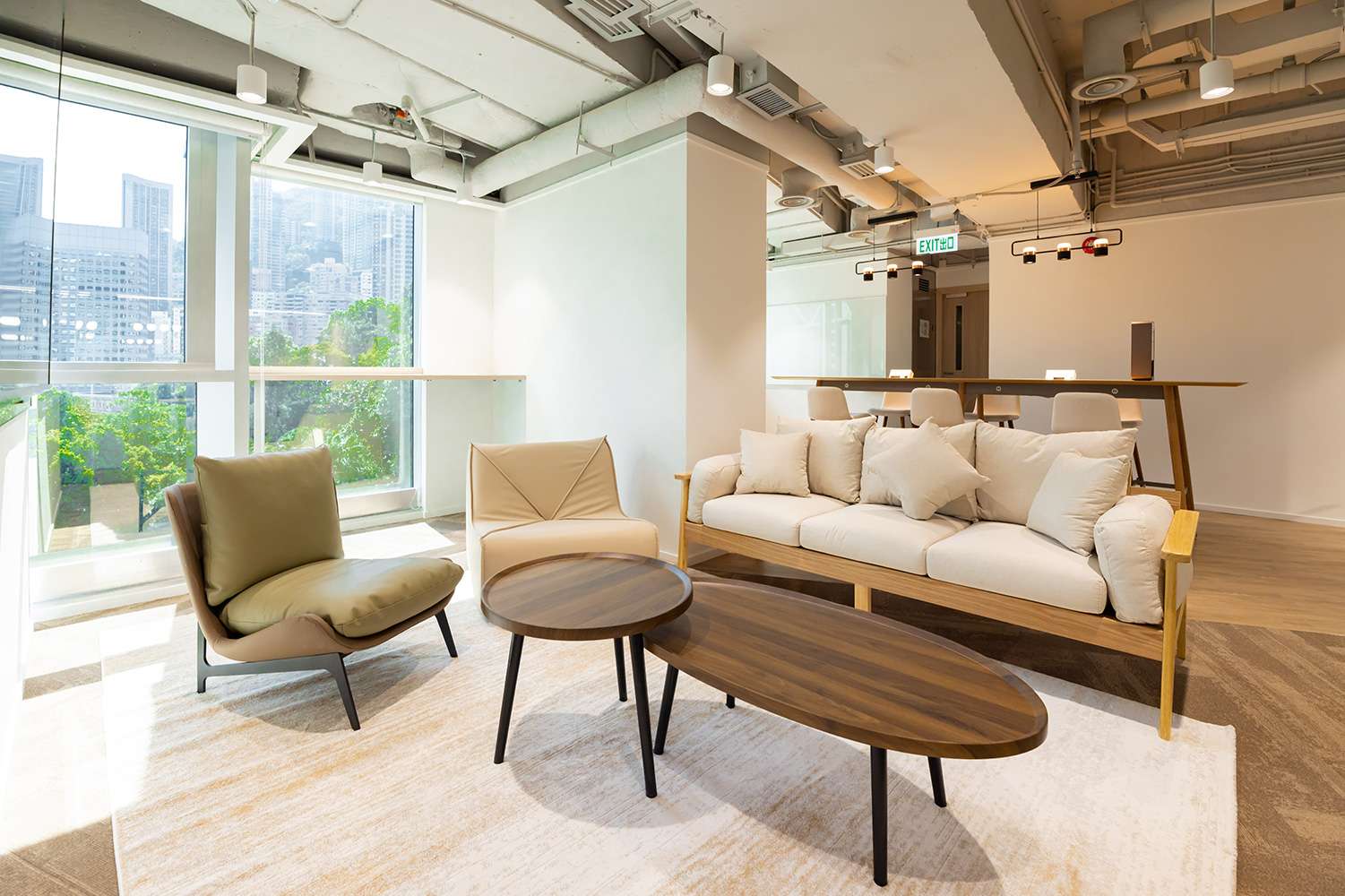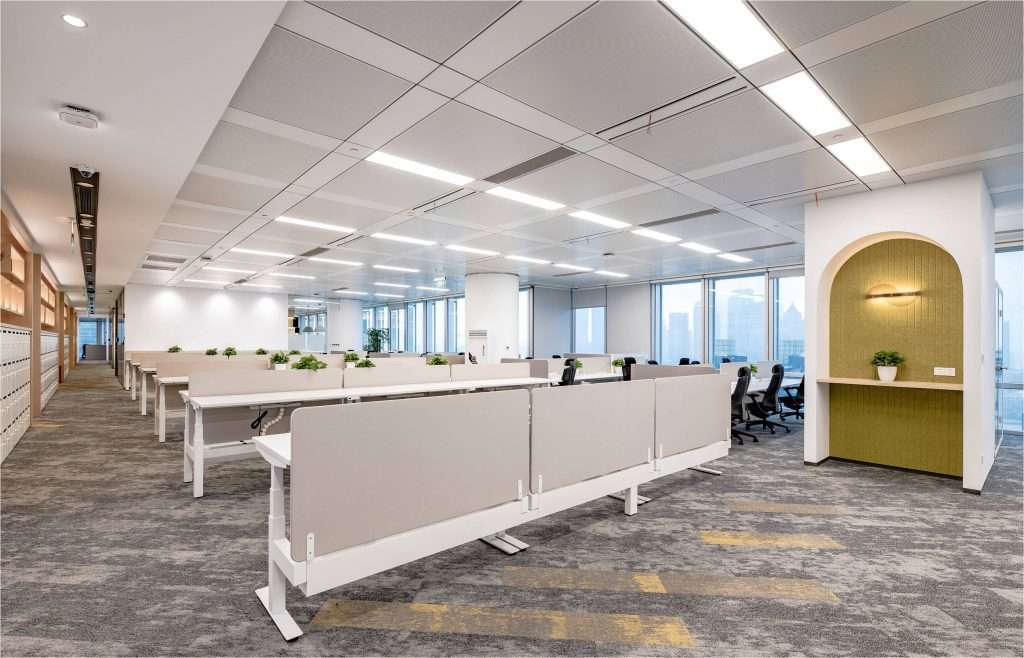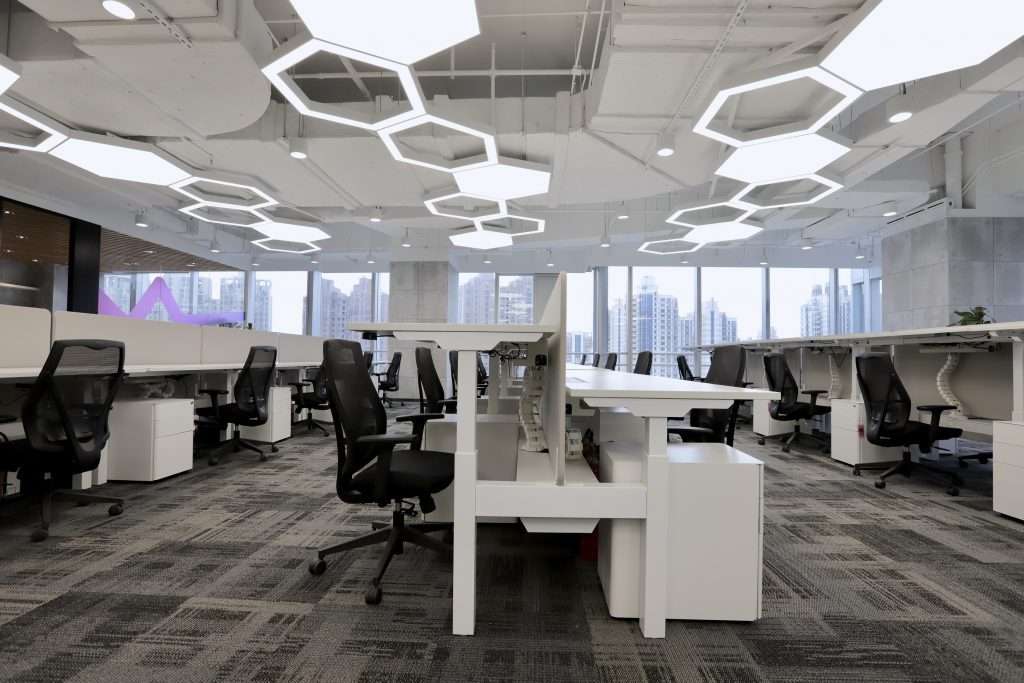Discover The Power of Interior Office Design & Office Renovation

Transform Your Hong Kong Workspace: Interior Office Design and Renovation for Maximum Productivity and Space Optimization
Interior Office Design: Optimizing your office space in Hong Kong can have a significant impact on the productivity of your employees. As businesses in Hong Kong strive to stay competitive, it’s important to create a workplace that not only looks good, but also fosters a positive and productive work environment. In this article, we’ll explore some ways you can optimize your office space through interior office design in Hong Kong to maximize productivity.
Interior Office Design Hong Kong:
The first step in optimizing your office space is to understand the design elements that make a difference in a workplace. A well-designed office space should not only be functional, but also aesthetically pleasing. In Hong Kong, modern office design incorporates elements of both minimalism and functionality, creating an environment that is both stylish and productive.
One key aspect of interior office design in Hong Kong is the use of natural light. Natural light has been shown to improve mood and cognitive function, and therefore, can help to increase productivity.
In more detail, Natural light in the office has the below benefits,
- Improved mood and well-being: Exposure to natural light has been found to increase the production of serotonin, a hormone that helps regulate mood, and decrease the production of melatonin, a hormone that can make people feel drowsy. This can help employees feel more alert and positive, which can improve their overall well-being.
- Increased productivity: Studies have shown that employees who work in offices with natural light are more productive and have better cognitive function than those who work in artificially lit environments. Exposure to natural light can help employees stay alert, focused, and energized throughout the day.
- Better sleep quality: Exposure to natural light during the day can help regulate employees’ circadian rhythms, which can improve their sleep quality at night. This can help employees feel more rested and refreshed, which can improve their performance and mood the next day.
- Reduced absenteeism: Employees who work in offices with natural light are less likely to take sick leave than those who work in artificially lit environments. This may be because exposure to natural light can help boost employees’ immune systems and improve their overall health.
Overall, natural light in the office can have a significant impact on employees’ physical and mental well-being, as well as their productivity and job satisfaction.
By incorporating large windows, or even skylights, into your office design, you can bring in natural light and create a brighter and more uplifting work environment.
The incorporation of color in interior office design – Here are a few ways that color can help with office design:
- Establishing a brand identity: Color can be a powerful tool for establishing a brand identity and conveying the values and personality of a company. By using the company’s brand colors in the office design, it can create a sense of consistency and reinforce the company’s brand message.
- Creating a welcoming environment: The use of warm colors like yellows, oranges, and reds can create a welcoming and inviting environment that can make employees and visitors feel more comfortable and at ease.
- Enhancing creativity and productivity: Studies have shown that certain colors can enhance creativity and productivity. For example, blues and greens have been found to promote calmness and focus, while brighter colors like yellow and orange can stimulate creativity and energy.
- Improving mood and well-being: Color can also have a significant impact on mood and well-being. Soft, calming colors like pastels and muted tones can help create a sense of relaxation and tranquility, while brighter, more vibrant colors can promote energy and positivity.
- By adding green natural elements into the office design, mental health is improved and stressed is decreased. Biophilia can boost employee health and well being. Read more here.
In Hong Kong, offices tend to use calming and neutral colors like white, gray, and blue. These colors are believed to help reduce stress and improve focus, which can lead to increased productivity.


Office Renovation: Flexible Workspaces
If you’re looking to optimize your office space, an office renovation can be a great solution. A renovation allows you to make changes to your office that can help increase productivity and create a more enjoyable work environment.
One popular trend in office renovation in Hong Kong is the incorporation of flexible workspaces. This trend is driven by the growing number of remote workers and freelancers in the city. Flexible workspaces allow employees to choose the best working environment for their needs, whether that be a traditional desk, a comfortable lounge area, or a private meeting room. Here are some ideas
- Versatile workspaces: Create versatile workspaces that can be used for different purposes, such as meetings, training, and individual work. Use movable walls or partitions to create flexible spaces that can be easily reconfigured.
- Multi-functional rooms: Create multi-functional rooms that can be used for different purposes, such as a conference room that can also be used for training sessions or a lounge area that can also serve as a quiet space for focused work.
- Collaborative spaces: Design collaborative spaces that encourage teamwork and brainstorming, such as communal work tables or whiteboards.
- Quiet zones: Create quiet zones where employees can go for focused work or to take a break from the noise and distractions of the open office. These can be small rooms or booths that offer privacy and quiet.

Incorporating Technology Into Interior Office Design
Another trend in office renovation is the incorporation of technology. In Hong Kong, it’s essential for businesses to stay ahead of the technological curve, and incorporating technology into the workplace is a great way to achieve this. From smart lighting systems and voice-activated devices to virtual reality technology and advanced security systems, the incorporation of technology can make a huge difference in productivity and work satisfaction.
Here are some ways to incorporate technology into an interior office design and office renovation:
- Upgraded Infrastructure: Begin by upgrading the office’s infrastructure, such as electrical, internet and network cabling, to support the latest technology requirements.
- Wireless connectivity: Use Wi-Fi connectivity to give employees the freedom to work from anywhere in the office.
- Collaborative tools: Consider using collaborative tools such as digital whiteboards, cloud-based file storage, and video conferencing software to improve communication and teamwork.
- Video conferencing: Install video conferencing systems in meeting rooms to allow remote employees to participate in meetings.
- Smart lighting: Use smart lighting systems that can adjust to natural light levels or pre-set schedules to save energy and reduce costs.
- Automation: Implement automation technology to streamline processes, such as smart thermostats that adjust temperature based on occupancy levels, or voice-activated assistants to control lighting and other equipment.
- Mobile apps: Develop mobile apps to give employees access to company systems and data from their smartphones or tablets.
- Cybersecurity: Ensure that the latest cybersecurity measures, such as firewalls and data encryption, are in place to protect company information and data.
By incorporating these technology features into your interior office design and office renovation, you can create a modern, high-tech workspace that can help improve productivity, collaboration, and communication among employees.
Interior Office Design – Space Planning
Space planning is a crucial aspect of interior office design that involves arranging furniture, equipment, and other elements to create a functional and productive workspace. Here are some tips for space planning in office design:
- Analyze your needs: Determine the needs of your business and employees, such as the number of employees, workstyles, and storage requirements.
- Understand zoning requirements: Check zoning laws and regulations in your area to ensure that your office space meets the necessary requirements.
- Determine circulation patterns: Plan the circulation patterns of the space, taking into account the movement of employees, visitors, and equipment. Ensure that there is enough space for people to move around freely.
- Create a functional layout: Plan the layout of the space to ensure that it meets the needs of your business and employees. For example, group employees who work together in the same area and ensure that there is enough space for collaborative work.
In Hong Kong, open-plan office designs are popular, as they promote collaboration and teamwork while also allowing natural light to circulate throughout the office.

Another important aspect of interior office design is the use of storage solutions. Clutter and disorganization can be a major source of stress and distraction in the workplace, so it’s important to incorporate storage solutions that keep your office tidy and organized. In Hong Kong, many businesses use wall-mounted storage systems and modular furniture to maximize space and minimize clutter.

Workplace Design: Ergonomics
Finally, it’s important to consider the overall ergonomics is workplace design when optimizing your office space in Hong Kong.


Ergonomics is the practice of designing and arranging workspaces, products, and systems to promote safety, efficiency, and comfort. In interior office design, incorporating ergonomic principles can bring numerous benefits, including:
- Improved employee comfort: Ergonomic design can help reduce physical discomfort and fatigue, making it easier for employees to focus on their work and remain productive throughout the day.
- Reduced risk of injury: Ergonomic design can help reduce the risk of musculoskeletal injuries such as back pain, neck pain, and carpal tunnel syndrome, which can result from poor posture or repetitive motion.
- Increased productivity: Ergonomic design can help employees work more efficiently by reducing the time and effort required to perform tasks, minimizing interruptions, and reducing the risk of physical discomfort or injury.
- Improved employee morale: A comfortable and ergonomic workspace can boost employee morale, resulting in increased job satisfaction and a more positive work environment.
- Better employee retention: An ergonomic workspace can help attract and retain employees by demonstrating a commitment to their well-being and creating a positive work environment.
Incorporating ergonomic principles into office design can have numerous benefits for both employees and employers. By promoting safety, efficiency, and comfort, ergonomic design can help create a productive and healthy work environment. In Hong Kong, many offices use ergonomic furniture and equipment, such as adjustable chairs and desks, to help prevent injuries.
To find out more about Interior Office Design and Renovation Cost Per Square Foot in Hong Kong click here
Looking for some interior office design inspiration check out our post here about Office Design and Everything You Need To Know For Your Next Office Renovation.
Contact us for your next office design and renovation project